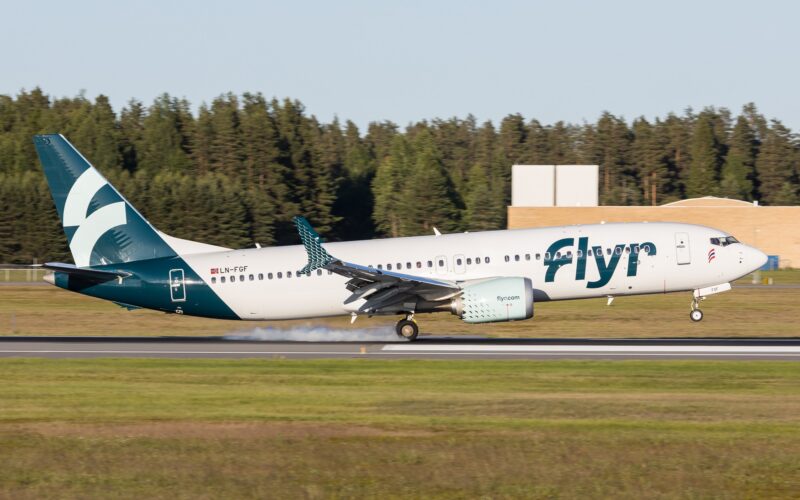Norwegian low-cost carrier Flyr announced it would file for bankruptcy and cease operations with immediate effect after failing to raise the required financing to cover its obligations.
The airline’s management said on January 30, 2023 that it would need to explore its options after failing to raise enough capital to get it through the winter season. On the same day, the Oslo Stock Exchange (OSL) put Flyr in a so-called recovery box, “a special compartment where Oslo Børs [OSE – ed. note] can place securities when the Issuer is subject to circumstances that make pricing of the securities particularly uncertain”.
Flyr operated its last flights on January 30, 2023, with none of the carrier’s aircraft having been active since arriving at Oslo Gardermoen Airport (OSL). On January 31, 2023, the carrier announced that it will file for bankruptcy on 1 February 1, 2023.
“The board’s decision is unanimous and is due to the fact that there is no longer a realistic opportunity to achieve a solution for the short-term liquidity situation,” the airline explained in a filing published on the OSE. Meanwhile, customers were greeted with a message on the airline’s website that it had been “unsuccessful with the new financial plan and the board concluded on Tuesday evening that there are no alternatives for further operation”.
“We will miss you all from the bottom of our hearts and deeply apologize to everyone affected by the fact that we now have to go in for landing,” the announcement continued.
Attempts to raise capital
Still, before it abruptly ended operations in a span of a couple of days, Flyr has been looking to raise cash to meet its obligations in the short term throughout the past few months.
Called the “November Financing Plan”, the low-cost carrier issued 25 billion new shares at a price of NOK0.01 ($0.0010) to raise up to NOK250 million ($25 million) of capital on November 10, 2022. The cash would have been used to pay for the European Union Emission Trading System (EU ETS) quotas, as well as allow the carrier to ramp up for the upcoming peak season in spring and summer.
However, the company “traded considerably below the subscription price of the November Financing Plan, which meant that succeeding with the November Financing Plan became increasingly unlikely,” the airline added in the filing. Its hope was to wet lease aircraft to an unidentified European carrier, with the latter looking to lease up to six 737s from Flyr. The finalization of the lease agreement was subject to the Norwegian low-cost carrier acquiring enough funds through its the financing plan.
“The evaluation done by the Company and its financial advisors was that this wet lease agreement, which would have secured the income and a profitable operation for 50% of the Company’s fleet for the entire period from the end of March to the end of October 2023,” Flyr indicated, adding that the agreement would replace the November Financing Plan.
To fulfill the conditions to begin wet leasing its aircraft and replenish its cash position, the Norwegian low-cost carrier was looking to raise as much as NOK330 million ($33 million) with the help of several financial advisors, namely three Norway-based banks (Managers). “In spite of the de-risking of the investment case, and the support from several key shareholders, the Managers have not yet been able to raise the sufficient market underwriting,” Flyr concluded.
In total, the airline had 12 Boeing 737 aircraft in its fleet, including six 737 MAXs. Flyr began flying in June 2021.

